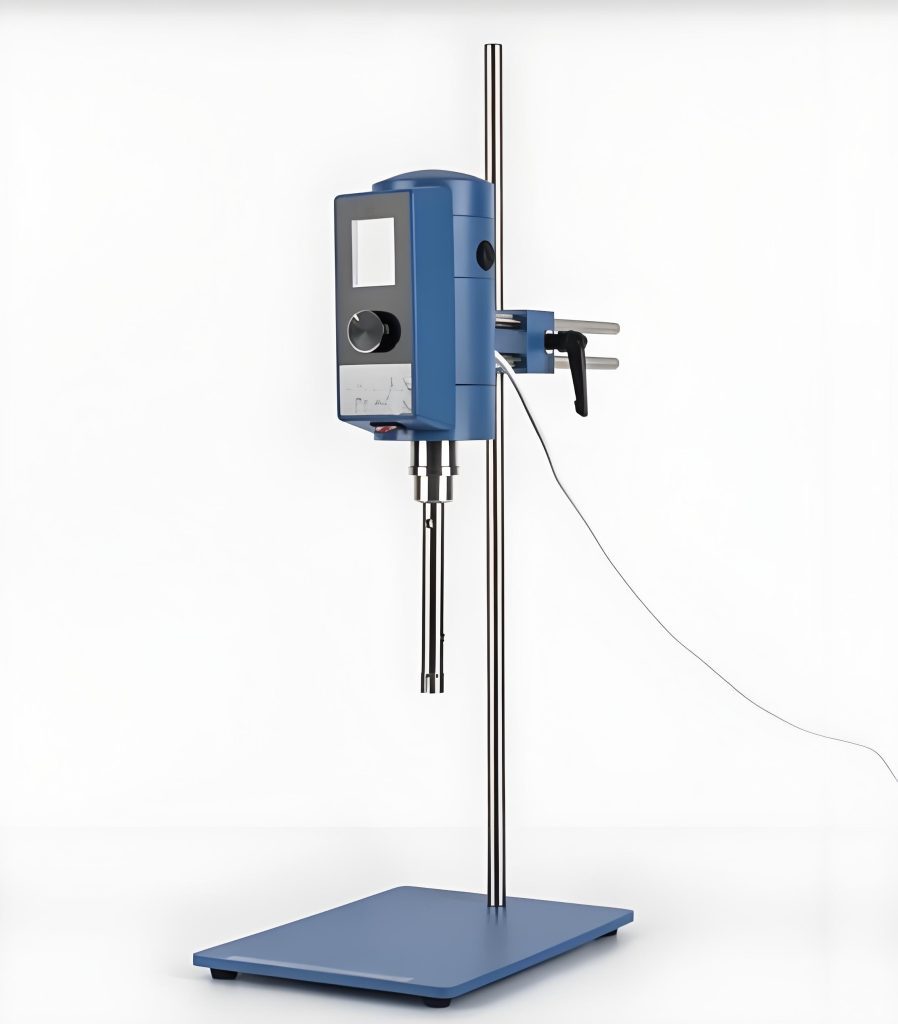High speed disperser is a kind of equipment for mixing, dispersing and stirring various substances, which is widely used in chemical, food, medicine, material science and other fields. According to different classification standards, high-speed dispersers can be divided into many types. The following is an introduction to the main categories of high-speed dispersers:

First, classification by structural form
Bucket type high speed disperser
Features: The material is put into the bucket, and the material is quickly dispersed by rotating the dispersion sheet inside.
Application: Suitable for processing large quantities of materials, common in industrial production.
Desktop high speed disperser
Features: Compact structure, usually placed on the table, through the rotation of the spindle and dispersion sheet to mix and disperse materials.
Application: Suitable for use in laboratory or small-scale production.
Elevating high speed disperser
Features: Equipped with lifting device, the height of the disperser can be adjusted according to needs, easy to operate and maintain.
Classification: It can be further divided into hydraulic lift disperser, electric lift disperser, pneumatic lift disperser, etc.
Application: Suitable for the treatment of various viscosity materials, widely used in chemical, paint, ink and other industries.
High-speed disperser for autoclave
Features: Specially designed to be installed in a reactor or container to mix and disperse materials by rotating dispersion plates.
Application: Suitable for mixing and dispersing materials in closed containers.
Second, according to the type of dispersion disk classification
Standard dispersion disk
Features: Traditional structure of the dispersion plate, suitable for various types of material dispersion.
Working principle: Rely on the shearing force generated by the teeth around the disk in the process of high-speed rotation to disperse the material.
Turbine dispersion disc
Features: Mainly suitable for dispersing materials with high viscosity and high solid content.
Working principle: The propeller-like part in the middle of the dispersion disc produces a downward force during high-speed rotation, which promotes the material to move downward from the hole in the middle of the dispersion disc to achieve efficient dispersion.
Plus dispersion tray
Features: Improved design based on standard dispersion disk.
Working principle: The material in the upper part of the dispersion plate is transferred downward through additional holes with guidance to achieve the purpose of effective dispersion.
ET dispersion disk
Features: An additional metal plate is erected on the disk surface to accelerate the mixing effect.
Note: Although the probability of collision between the filler and the metal sheet is increased, the presence of additional metal sheets may cause the follow-up phenomenon of the material during the high-speed dispersion process, affecting the dispersion effect.
Third, according to power source classification
Electric high speed disperser
Features: Use electricity as a power source.
Application: Suitable for mixing and dispersing all kinds of materials.
Pneumatic high speed disperser
Features: Use gas as a power source.
Application: Suitable for mixing and dispersing materials in special environment.
Hydraulic high speed disperser
Features: Use liquid as a power source.
Application: Suitable for mixing and dispersing materials in special environment.
Manual high speed disperser
Features: The use of manpower as a power source.
Application: Suitable for small-scale material mixing and dispersion.
Fourth, according to the application field classification
High speed disperser for chemical industry
Features: Designed for the characteristics of chemical materials.
Application: Widely used in pigment, dye, paint, ink and other fields.
High speed disperser for food industry
Features: In line with food hygiene standards.
Application: Used for mixing, mixing and homogenizing food raw materials, such as sauces, condiments, jams, chocolate, etc.
High speed dispersers for the pharmaceutical industry
Features: Meet the requirements of drug production.
Application: For drug mixing and dispersion, such as preparation of suspension, emulsion, capsule liquid filling, etc.
High speed disperser for medical device industry
Features: Suitable for the manufacturing process of medical devices.
Application: For the preparation of medical glue, medical paste and other products.
Fifth, other classification methods
Classification by scale: It can be divided into small high-speed dispersors (suitable for laboratory use) and large high-speed dispersors (suitable for industrial production).
Classification by function: It can be divided into ordinary high-speed dispersors (suitable for general material mixing and dispersing) and special functional high-speed dispersors (such as explosion-proof dispersors, high temperature high-speed dispersors, etc.).
In summary, there are a variety of classification methods for high-speed dispersors, and users can choose the right type according to actual needs and material characteristics.













